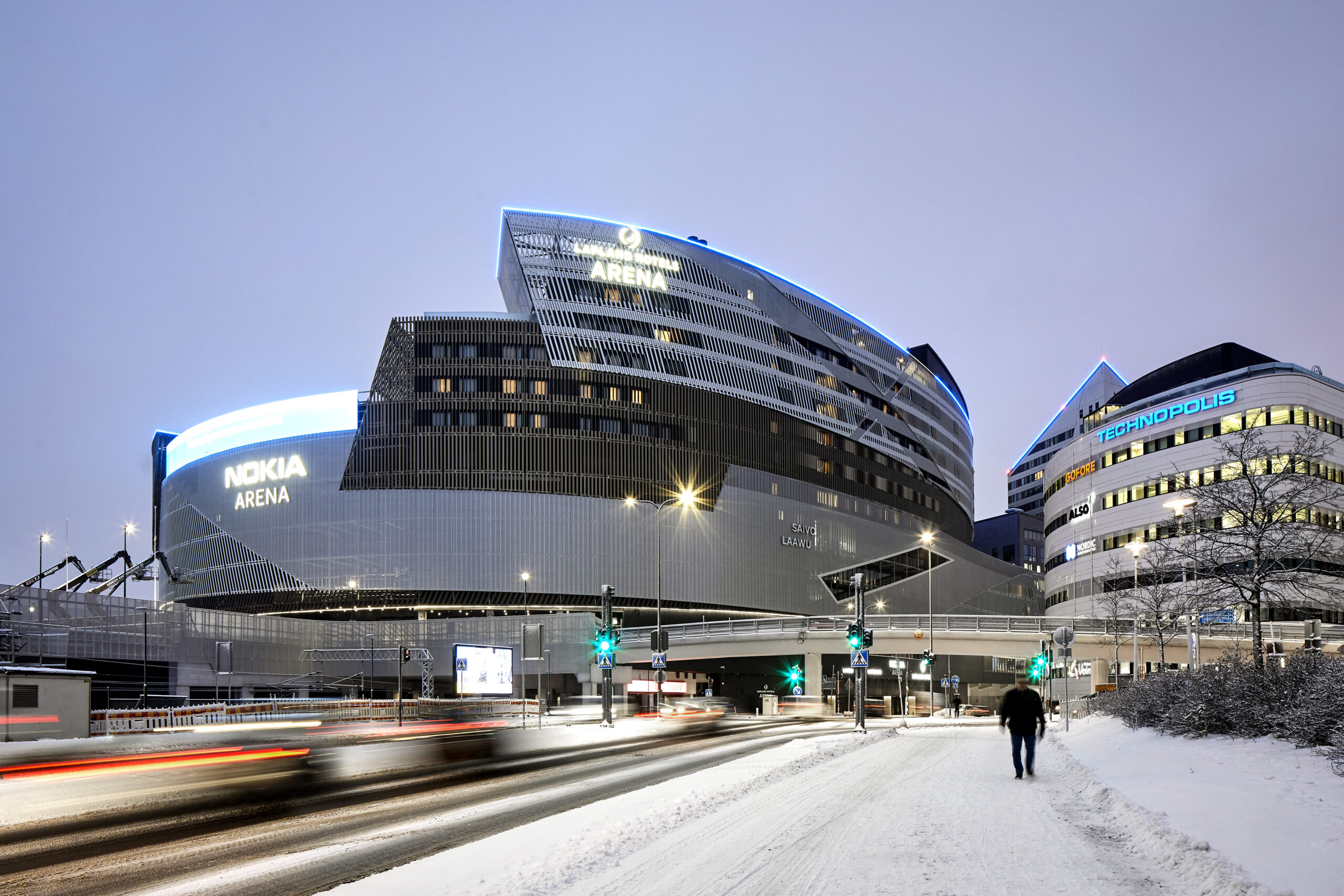The Nokia Arena is an indoor arena in Tampere, Finland. It hosts ice hockey matches and major cultural events, including the 2022 Men’s World Cup. This structure redefines the standard of architecture for sport, becoming a new attraction for the whole city. Designed by Studio Daniel Libeskind together with SRV Rakennus Oye and in collaboration with local partners ARCO Architecture Company and Aihio Arkkitehdit Oy, who designed the interior spaces, the multi-purpose arena is much more than just a sports centre. The ambitious project is also an urban planning solution that, rising on top of the existing railway tracks, brings together the fabric of the city and connects east to west, creating a vibrant centre of quality living, working, leisure and culture for the city.
The complex as a whole also includes a 273-room hotel and five mixed-use blocks topped by five residential towers, as well as retail and office space. The multi-purpose ice hockey arena can accommodate up to 15,000 spectators. Approximately 82,000 sqm of the area is designated for mixed use, of which 64,500 sqm is for the arena, 5,800 sqm for multi-purpose spaces and 11,600 sqm for the hotel. With its casino, bar and restaurant, the Nokia Arena redefines its function as a hub for various urban activities.
Artificial lighting design was a key component of this project. PERFORMANCE iN LIGHTING supplied more than 900 linear SL764 series luminaires for the general lighting of the large public areas, corridors and spacious foyers, installed in cooperation with Caverion Suomi Oy. A challenge that required customised designs, special black paint to blend in with the architectural structure and compliance with current safety regulations. Over 2,000 m of segmented light lines were installed in 2×2 m compositions that give rhythm to the ceiling creating a luminous texture, each luminaire was supplied pre-assembled with quick connectors to facilitate installation and reduce assembly time.
The light is controlled by a DALI digital protocol that allows for the creation of different lighting scenarios and the modulation of energy consumption, a feature that has contributed to the energy rating of the entire complex which, thanks to its highly sustainable design, has achieved a LEED Gold rating.
For more information visit: www.performanceinlighting.com







